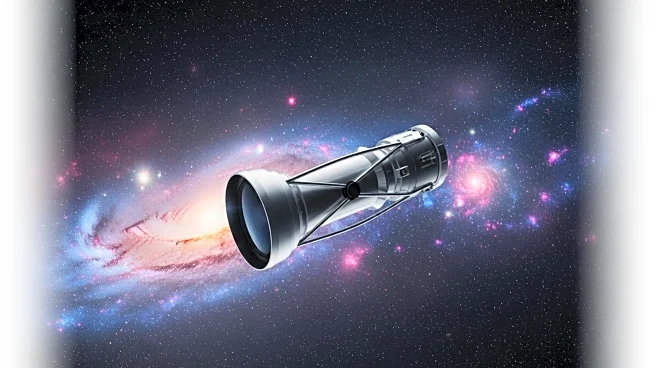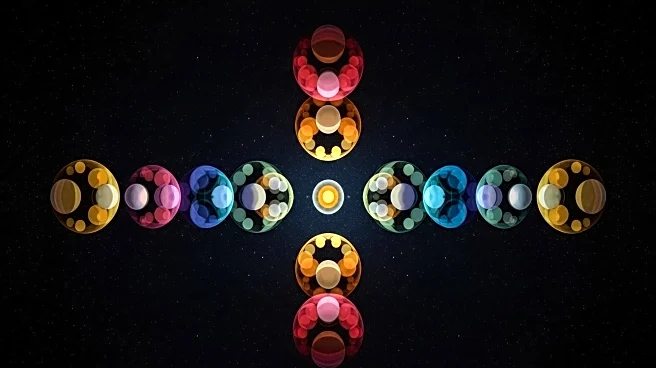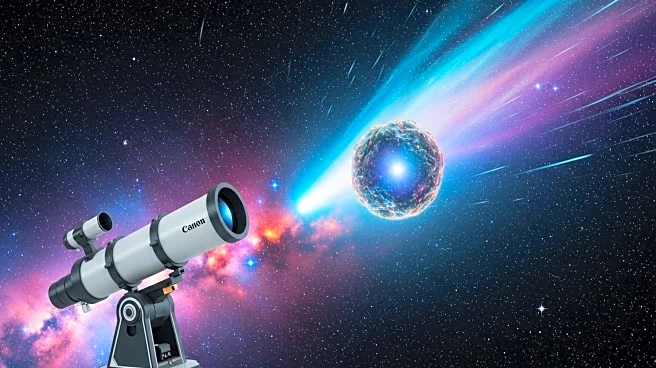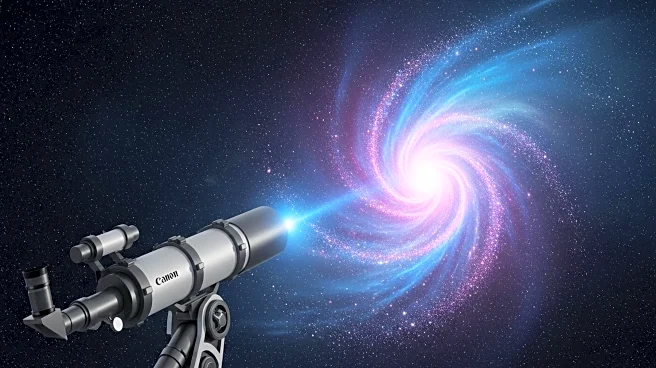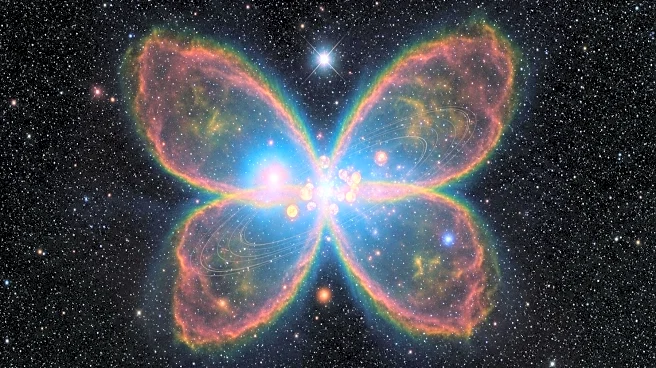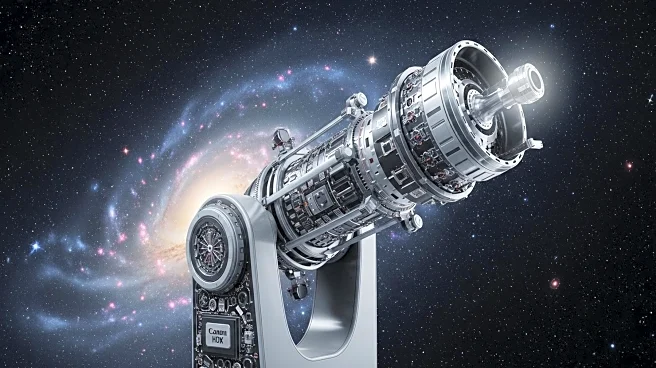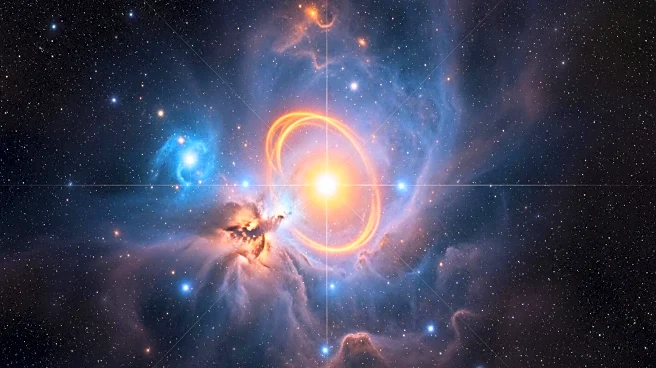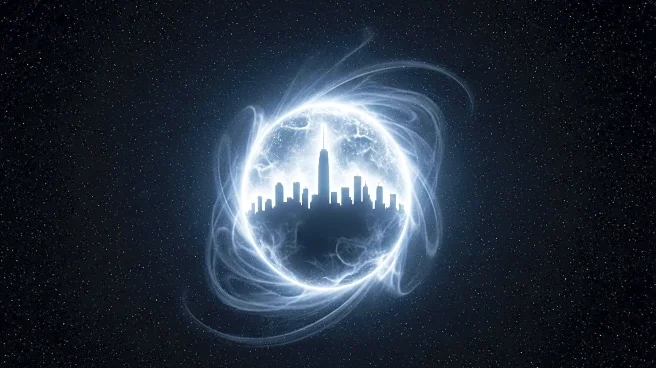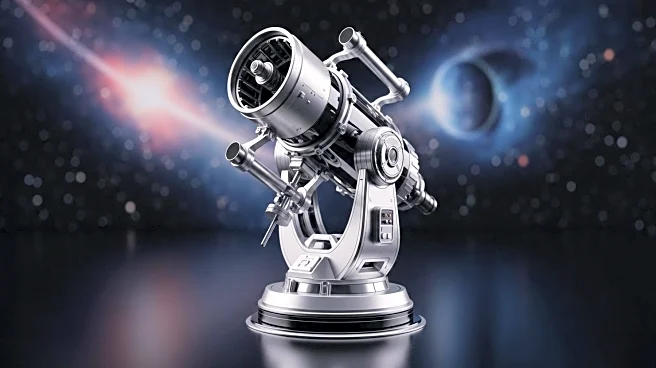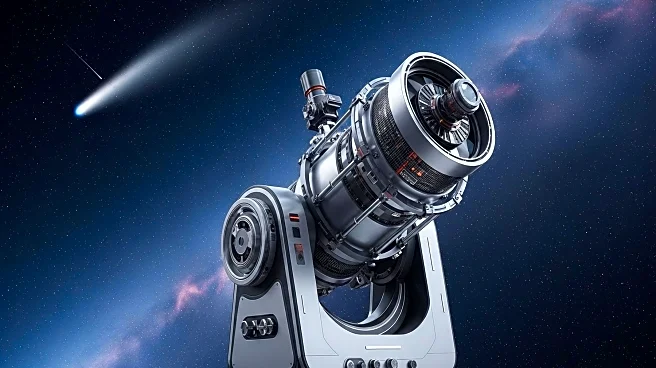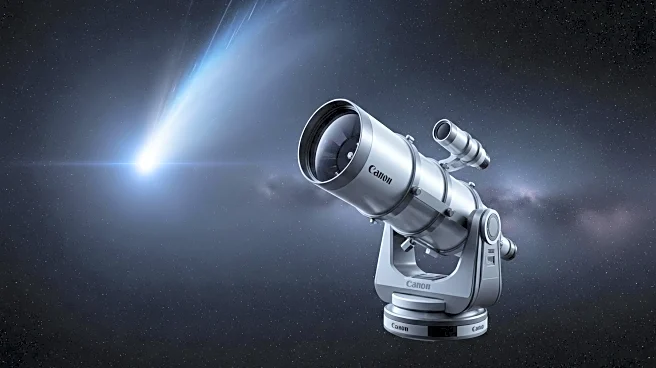What's Happening?
The James Webb Space Telescope, developed by NASA, the European Space Agency, and the Canadian Space Agency, launched on December 25, 2021. On July 11, 2022, President Joe Biden unveiled the first full-color image from the telescope, showcasing the galaxy cluster SMACS 0723 in unprecedented detail. This image is the deepest and sharpest view of the distant universe to date. The following day, additional images and spectroscopic data were released, revealing cosmic features never before captured with such clarity. These observations mark the beginning of Webb's science operations, allowing astronomers to study various celestial objects, from nearby planets to distant galaxies.
Why It's Important?
The release of the James Webb Space Telescope's first images represents a significant milestone in astronomical research. The telescope's ability to capture detailed images of the universe's early stages provides scientists with new insights into the formation and evolution of galaxies, stars, and planetary systems. This advancement in infrared astronomy extends humanity's vision farther into space and back in time, potentially leading to groundbreaking discoveries about the cosmos. The Webb Telescope's capabilities will enhance our understanding of the universe's history and the processes that shape celestial bodies.
What's Next?
With the commencement of its science operations, the James Webb Space Telescope will continue to observe a wide range of astronomical phenomena. Researchers worldwide will utilize its advanced instruments to study exoplanets, star formation, and the dynamics of galaxies. The telescope's findings may influence future space missions and contribute to the development of new theories in astrophysics. As Webb continues to deliver high-resolution data, it will play a crucial role in expanding our knowledge of the universe.
